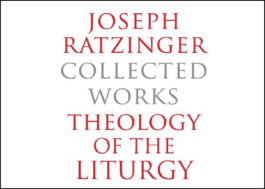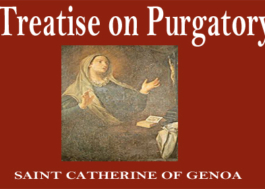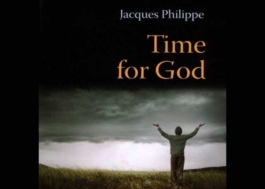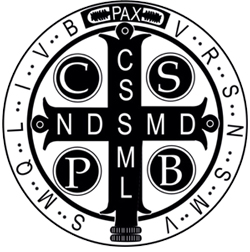St. Bernard of Clairvaux’s Life of St. Malachy of Armagh

H. J. Lawlor
INTRODUCTION
The main purpose of this Introduction is to give an account of a movement which changed the whole face of the Irish Church, and to the advancement of which St. Malachy devoted his life. In default of a better word we may call the movement a Reformation, though it might perhaps be more accurately described as an ecclesiastical revolution. Without some knowledge of its aims and progress it is impossible to assign to Malachy his true place in the history of his native country.
That such a movement actually took place in the twelfth century is beyond doubt. From about the year 1200 on it is certain that the organization of the Church of Ireland was similar to that of the other Churches of western Christendom. The country was divided into dioceses; and each diocese had a bishop as its ruler, and a Cathedral Church in which the bishop’s stool was placed. The Cathedral Church, moreover, had a chapter of clergy, regular or secular, who performed important functions in the diocese. But up to the end of the eleventh century all these things were unknown among the Irish. The constitution of the Church was then of an entirely different type, one that had no exact parallel elsewhere. The passage from the older to the newer organization must have taken place in the twelfth century. During that century, therefore, there was a Reformation in the Irish Church, however little we may know of its causes or its process. But this Reformation was no mere re-modelling of the hierarchy. It can be shown that it imposed on the members of the Church a new standard of sexual morality; if we believe contemporary writers, it restored to their proper place such rites as Confession, Confirmation and Matrimony; it substituted for the offices of divine service previously in use those of the Roman Church; it introduced the custom of paying tithes; it established in Ireland the monastic orders of Latin Christendom1; and it may have produced changes in other directions.2 But I propose to confine myself to the change in the constitution of the Church, which was its most striking feature. The subject, even thus narrowed, will give us more than can be satisfactorily treated in a few pages.
First, I must emphasize the assertion made a moment ago that the constitution of the Irish Church in the eleventh century was sui generis. Let us begin by reminding ourselves what it was from the sixth to the eighth century. It was then essentially monastic in character. The rulers of the Church were the abbots of the monasteries, commonly known as the coarbs or successors of their founders. These abbots were sometimes bishops; but whether they were bishops or of lower rank in the ministry, their authority was inherent in their office of coarb. At this period bishops were numerous—more numerous than in later medieval or modern times; and certain functions were reserved for bishops, for example, ordination. No ecclesiastic, of whatever status, could perform such functions, unless he was of the episcopal order. But no bishop, as such, had jurisdiction. The bishops were often subordinate officers in monasteries, reverenced because of their office, but executing their special functions at the command of the abbots. Sometimes a bishop was attached to a single tribe. Sometimes a group of bishops—often seven in number—dwelt together in one place. But in no case, I repeat, had they jurisdiction. Thus ecclesiastical authority was vested in the abbots. The episcopate was bestowed on certain individuals as a personal distinction. Thus the bishops, if they were not also abbots, had only such influence on the affairs of the Church as their sanctity, or their learning, might give them.
It may surprise some that so anomalous a system of government should have persisted as late as the eleventh century, in other words for a period of over 500 years. But we must take account of the Danish—or as we should rather call it, the Norse—invasion of Ireland. Danish ships first appeared off the Irish coasts about the year 800. From that time for two centuries Ireland was to a large extent cut off from intercourse with the rest of Europe. The aim of the northern hordes, as it seems, was not mere pillage, but the extinction of Christianity. Ecclesiastical institutions were everywhere attacked, and often destroyed. And these institutions were centres of scholarship. Heretofore Ireland had been the special home of learning, and had attracted to itself large numbers of foreign students. But in those disastrous centuries its culture was reduced to the lowest point. In such circumstances it was not possible that the organization of the Church should be developed or strengthened. The Danish domination of the country must have tended to stereotype the old hierarchical system. It might, indeed, suffer from deterioration: it probably did. But it could not be assimilated to the system which then prevailed on the Continent. We should expect that the constitution of the Church in the eleventh century, whatever abuses may have crept into its administration, would in principle be identical with that of the pre-Danish period.

Book eBook St. Bernard of Clairvaux's Life of St. Malachy of Armagh
H. J. Lawlor
29 noviembre, 2015
update 18 agosto, 2021
Go to the Download pageMore eBooks in English

Confession

Rome Sweet Home

An Exorcist Tells His Story

Theology of the Liturgy

Return to the Baltic

The Path to Rome

Images of Hope

The Wisdom of the Poor One of Assisi

The Great Heresies

Tolkien: Man and Myth

Lord of the World By Robert Hugh Benson

Treatise on Purgatory

Three to Get Married

Via Crucis: A Romance of the Second Crusade

The Confessions of St. Augustine

Read Me or Rue it

The Brown Scapular, the Most Powerful Sacramental

Those Who Serve God Should Not Follow The Fashions

Mary, Motherhood, and the Home

How to Avoid Purgatory

The Story of Annette

The Friendship of Christ

The Imitation of Christ

The Sinner’s Guide

A Letter to the Friends of the Cross

On the Incarnation of the Word of God

Introduction to the Devout Life

Holy Bible

The Dolorous Passion of Our Lord Jesuchrist

































¿Cuanto cuesta?
Puede descargarlo gratuitamente